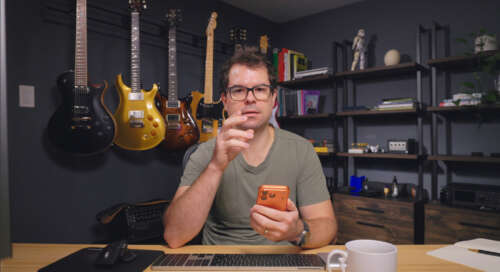Studio Missive 14: an update on e‑commerce for NPOs, and lessons learned from filming my first video
Hi friends,
Happy Friday! Here’s what’s happening at the studio this week.
What’s inspiring you right now?
- Robin Sloan wrote this week about the shape od ideas: how do they form, and where do they come from? I think he hit upon something mildly profound here about the genesis of most great creative ideas.
- After a decade, Frank Chimero has a new talk. I’ve linked to his blog post about it, which doubles as a transcript. The talk is about ways of engaging with AI, and how we work in, alongside, or under machines. He starts by making a mockery of Rick Rubin (somebody ought to) and talking about Brian Eno before eventually pivoting to an allegory about the film Spirited Away. A fantastic read, and one I highly recommend.
- Ahmad Shadeed is a genius, right? Because his interactive demo of how to handle a modern section layout in CSS blew my mind.
- The rebranding of the Philadelphia Art Museum is inspired.
What are you working on?
This was a good week: a client signed off on a major project. We’re just finalizing the copy and image selections before we go live now. They also signed off on the next phase of work, which is updating their e‑commerce website to use a new provider.
Following up on last week’s missive, I’ve continued my deep dive on e‑commerce for nonprofits. After a sleepless night (unrelated), I woke up too early and decided to read the transcript of Salvatore Salpiero’s talk at Strip Sessions 2025, “Buying into Giving: Ecommerce strategies for nonprofits”. He largely echoed everything I’ve been moaning about, but his company claims to have a solution: Fundraise Up attempts to modernize the e‑commerce experience for NPOs and donors. I dug around and found out that a colleague at a current NPO client used Fundraise Up at past employers, and he said they’re the real deal. So I’m now investigating this as an option for clients who need to get migrated off Snipcart. More to come in the coming weeks, I am sure.

I also filmed my first YouTube video this week. It went comically badly. I froze every time I looked at lens. I don’t get stage fright; I’m just the sort of person who can’t remember the lyrics to his favourite songs, so memorizing even the gist of a script is difficult for me.
Beyond that, I forgot to pause or reset between takes, my camera (a Canon R6 Mk I) kept overheating, there was a slight crop in 4K that I didn’t notice that ruined my framing, my lighting was off, and I kept scrolling in all my onscreen demos. So almost none of my footage was really salvageable.
On top of that, I discovered that NLEs are not as easy to use as one might think. By comparison, Figma is a blessing.
After reviewing the footage, I realized that my strategy was wrong. First, this isn’t going to work if my camera keeps overheating. I got, at most, twenty minutes in a take before the camera overheated. Every time it overheated, I would turn off the camera and stop recording the mic and the screen for ten minutes so it could cool down a bit. Then I would try again. The whole process took about three hours, and I got fifty-four minutes of footage out of it. (The whole video will probably be fifteen minutes. I’m a noob.)
The only way to make this work easily is to record one long take everywhere. Then I can create a multicam clip in an NLE (I’m leaning towards Final Cut Pro, because it is so much faster than Resolve), and edit there, keeping everything in sync as I go.
This is much harder if the camera dies repeatedly and I have thirty video and audio files to sift through and match.
The solution was to buy a camera with unlimited recording time in 4K at 30 FPS. My heart wanted to upgrade to the Canon R5 Mk II, but it turns out the R6 Mk II solves my problems, records for much longer, and is almost half the price. So I walked to the camera store and picked one up on Wednesday.
I also learned a few other invaluable things:
- Reset between takes.
- Look at the lens. Not the monitor.
- I was underexposing myself a little bit, and overexposing my fill lights a little bit. This is easy to fix in take two, but not easy to fix in post, so I’m glad I noticed it now.
Recording take two is on next week’s todo list. I can’t believe how much time this all takes up, to be honest. But I think I’m going to get much, much faster once I understand what the heck I’m doing.
Thanks as always for reading, and I’ll talk to you next week.
Nathan